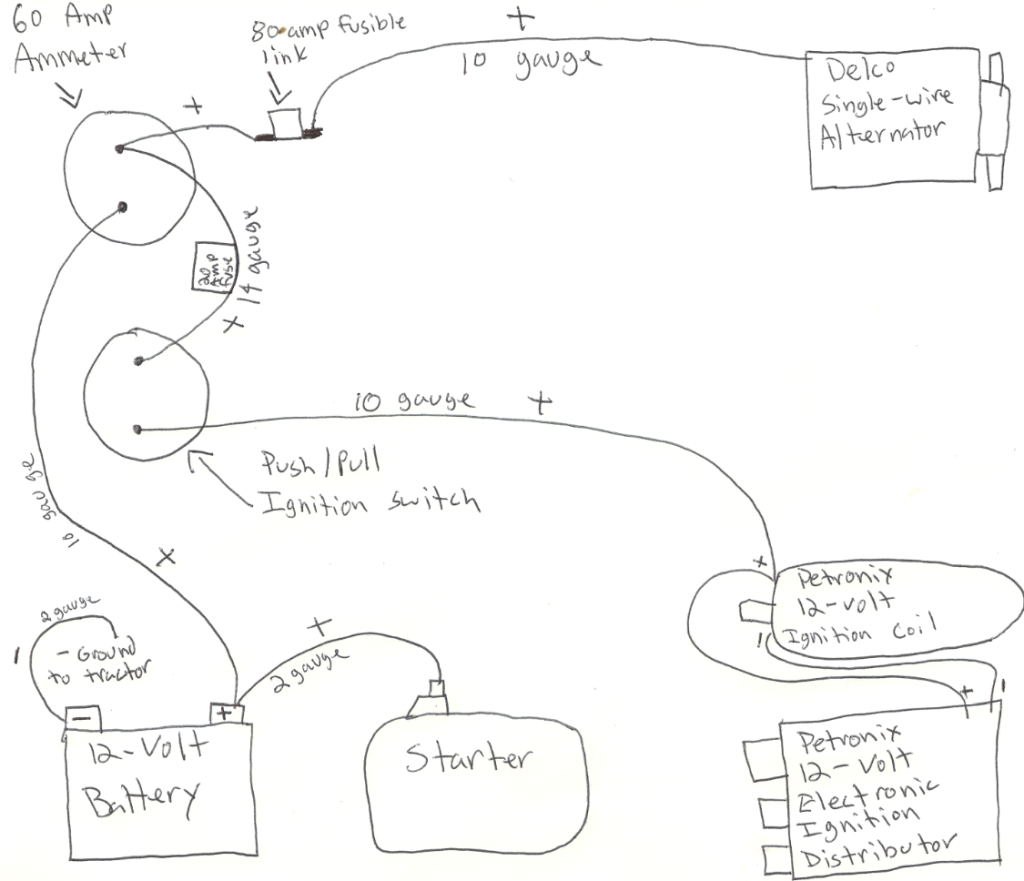

A second cable (bottom arrow) was run from the ammeter through the firewall to the starter relay stud. One cable was run through a grommet in the firewall to the ammeter. Above right: Before our ownership of the Dart, a previous owner ran a new wire from the alternator to the ammeter (top arrow). To protect our wire, we used a fusible link at the starter relay stud. The wire provides alternator current to the rest of the charging system from this point. Above center: The other end of the bypass wire was attached to the starter relay stud. By doing this, the high-current bypasses the bulkhead and the ammeter. The wire is the “famous” bypass wire procedure used by many to run current directly from the alternator to the rest of the charging system. We planned to modify the voltmeter to fit in the position that the ammeter currently occupied.Ībove left: A new 10-gauge wire was run from the alternator to the starter relay. Wanting a functioning yet factory appearing gauge on the instrument cluster, we picked up a 2-inch voltmeter gauge to replace the ammeter. The bypass worked, but the ammeter gauge was now rendered non-functional. The quick fix to reduce the current through the bulkhead and ammeter was to run a new charge wire from the alternator to the starter relay, and at the same time, disconnect the two ammeter wires and tie them together. The high-amp alternator put additional pressure on the wiring, which could result in melted or burnt wiring at the bulkhead or the ammeter. The expanded current requirement often led to the installation of a higher amperage alternator. However, as an owner added electrical components, the alternators could not keep up with the increased current demand. The spacing between the studs on the voltmeter is very similar to the ammeter’s studs. Above right: Also important to us was the extension of the positive and negative studs from the rear of the voltmeter. The ammeter on your dash may mount differently than our Dart, so it is crucial to find the voltmeter that will work in your vehicle. The Bosch voltmeter’s pointer was also upward and swept on approximately the same scale. Our ’67 Dart’s ammeter needle pointed in the upward direction and swept left-to-right in a 90° range. Above center: The voltmeter assembly was what we desired. All the Mopar charging systems of the 60s and 70s were equipped with low-amperage alternators that worked sufficiently with the factory wiring harness.Ībove left: The voltmeter assembly was loosened to the point where it could be removed-great care needed to be taken to guarantee no damage to the indicator needle.
AMP TO VOLT CONVERSION SERIES
With the ammeter and bulkhead in series between the alternator and the balance of the charging system, any circuit break will result in a no-charge condition. Then from the ammeter, the current must pass back through the bulkhead to the rest of the charging system. The major ammeter drawback is all the charging system current flows from the alternator through the bulkhead to the ammeter. The Chrysler Corporation continued using ammeters many years after Ford and Chevrolet moved to a voltmeter for charging-system monitoring. The spacer, washers, and nuts would be reused. Above right: The voltmeter was disassembled so that we could harvest the parts required for the conversion. We wanted a voltmeter that would have 13-13.5-volts at approximately the center point, and anything under 13-volts would be to the left of center, and 14 or more volts would be right of center.

FST 8205) at a local parts store for less than $10. We found a Bosch 2-inch voltmeter (part no. Above center: We have plans that will require a higher output alternator to meet our amperage needs, so we took the time to convert the charging system from the factory ammeter to a more reliable voltmeter. If the ammeter or the bulkhead connectors fail due to increased amperage, the charging system will not operate, and a fire could result. The ammeter and accompanying bulkhead wiring are installed in series between the alternator and the remainder of the charging system. Above left: The factory ammeter found on the muscle car era Mopars is the Achilles heel of the charging system.


 0 kommentar(er)
0 kommentar(er)
